Contents [hide]
Baptism is the first of the sacraments that enshrine the true birth of a Christian. It is through Baptism that we are purified from original sin and become part of the Church and of the body of Christ.
Thanks to Baptism, we have access to the other sacraments and begin to take the path of the Spirit. Purified by the unconditional forgiveness of God we become, in effect, his children.
The word Baptism derives from the Greek βάπτισμα, or báptisma, meaning “immersion”. It is precisely what this is, an immersion in purifying water. The symbolism of water as an instrument of purification occurs in many religions of antiquity. In particular, in Judaism it was necessary to practice purifying ablutions before being able to access the cult. The water cleansed the body and with it the spirit of all impurities, washing away the sin. Over time, these practices that thought of water as an instrument of purification, spread more and more, taking different forms among the various communities.
Ritual ablutions and purifying baths are in some ways a prelude to Baptism as we know it, but already in the Old Testament men had recognized the saving power of water, his being an instrument of God’s will to save the righteous. Think of the universal Flood, or the crossing of the Red Sea by Moses and the chosen people fleeing from Egypt.
We have to wait for the Baptism of John the Baptist to find something that is closer to our idea of baptism. In fact, in addition to using the purifying function of water, it made those who received it an integral part of the descendants of Abraham, of the people who waited with faith and hope for the coming of the Messiah. To access the Baptism of John it was necessary to repent of one’s own sins and beg for forgiveness. Those who requested it had to be aware of the purpose of this choice in their life and commit themselves to perpetrate it to the end. John himself declared that his baptism was only provisional, and was the prelude to the baptism that the Messiah will bring: a baptism made with water, waiting for the one made of fire.
When Jesus presented himself to John to receive baptism, he fully accepted his own destiny. Coming out of the water, Jesus saw the sky open and the Holy Spirit appear in the form of a dove, while from the sky a voice was heard: “You are my beloved child”. The Holy Spirit descended on him, investing him in his role, transforming him into the Lamb of God. It was the beginning of a new life and the premonitions of death, which would lead to the Resurrection. The destiny of a man and of all humanity was fulfilled on the banks of the Jordan River, in a single gesture of submission and humility that was destined to change everything.
The meaning of Christian baptism
Christian Baptism was created with the Pentecost, that is, with the descent of the Holy Spirit onto the Apostles, fifty days after the Resurrection of Jesus.
Just as the Baptism of Jesus in the waters of the Jordan represented the beginning of his ministry amongst men, Pentecost, the Baptism of fire of the Holy Spirit, represented the beginning of the Apostle’s mission and, to all effects, the beginning of the Christian Church. As ordered by Jesus, from that moment, Peter and the other disciples began to preach about the need to repent for our sins and receive baptism to obtain forgiveness and the gift of the Holy Spirit.
A Christian baptism involves immersion in water or alternatively, a sprinkling of water onto the head. Immersion in water symbolised the death of Jesus, while the Resurrection emerged from it. Sin dies in water, as a body that is contaminated by it dies symbolically.
This symbolic gesture, followed by the imposition of the hands on the celebrant, sanctions the liberation from all sin and the investiture of the Holy Spirit.
From this moment onwards, the faithful will be united with Christ, in his death, resurrection and glorification. The old man will no longer exist, now there will be a new man, a Christian freed from evil and an effective member of the Church. One who has in all respects become a Son of God, reborn through the water and the Spirit, regenerated by the Holy Spirit, enlightened by the light of Christ and saved from the darkness of sin, made a participant in the new people of God.
The symbols of baptism
Baptism, like all the Sacraments, involves the use of material elements, words and songs, symbolic gestures and non-verbal signs that, when taken together, give life to this precious and indispensable celebration in the life of a Christian.
In particular, it is worth examining a few of the symbolic elements:
- The water of the immersion
- The chrism
- The oil of the catechumens
- The light of the candle
- The white robe
The water, as already mentioned, serves the function of purifying the baptised, of washing from his or her body and from his or her soul, every sign of sin. Water is universally recognised as the symbol of life par excellence. It is the element that quenches and nourishes the earth, to allow it to bear fruit. It makes everything clean, and in the same way it cleans our soul from every stain.
The chrism it is used to consecrate and sanction the entry of the baptized into the great family of the Church. It is a fragrant and consecrated oil. Used not only for baptism, but also in Confirmation and in the ordination of priests. In Baptism, it is used to anoint the head of the baptised, giving him or her a kind of seal, that consecrates him or her in their his new role. In Crism, the priest draws a cross on the forehead of the Confirmed as a symbol of the Holy Spirit that descends onto them to enlist them as a ‘soldier’ of Christ. In the Ordination, it is used to anoint the palms of the hands of the presbyters and the foreheads of the bishops.
Together with the oil for the sick and the oil for the catechumens, it is blessed once a year by the Bishop during the Chrism Mass of Holy Thursday and then distributed to each parish.
Also, the oil of the catechumens is of great symbolic importance. In fact it declares the baptised as a solider of the faith, and a champion of Christendom. Not surprisingly, in ancient times the
oil was used by athletes to grease their limbs before training, and by wrestlers to escape the grip of their opponents. With the oil of the catechumens, the priest draws a cross on his chest and another between the shoulder blades of the baptised. This symbolises strength in the fight against temptations, a sort of shield against sin.

Christening Candles
The candle which is handed over to the parents or to the godfather of the baptised symbolises Christ, the light of the world, in the hope that He will enlighten the child and allow those who love him and support him or her to accompany him in the faith. It symbolises the help the Church has to provide to its new member, in finding their own light in the world. Light was the first gift of God, his first creation. In the Old Testament it was a symbol of Faith, and with the advent of Jesus this symbolism was enriched with new fundamental meanings in the life of a faithful. “I am the true light” Jesus said to the disciples: “You are the light of the world … your light must shine before men so that they may see your good works and glorify the Father who is in heaven!” (Matt. 5:16).
The candle, or baptismal candle represents the Christian’s commitment to finding the light of his own life of faith, to be in turn, a light of the world through his or her works and his actions,
The white gown is given during a Baptism as a symbol of new life, and the new dignity the baptised person has. In ancient times those who were baptised had to wear a new, white garment before joining the other faithful in the Church. The white garment expresses the purity of the soul returned without stain after a baptism, the profound change and the interior renewal that the sacrament has brought into the person who received it.
The Code of Canon Law for Baptism
The Code of Canon Law provides for the use of holy water for Baptisms, and the approved formula.
Baptisms for adults or children over seven years of age, requires a catechumenate period, in which they are prepared for the step they are about to face. Moreover, in order to receive Baptism, an adult must have expressed the desire to receive it; having been taught in faith and in his duties as a Christian; he gave proof of Christian life during the catechumenate; have repented of his sins.
For the baptism of children it is necessary that parents give consent and that they commit themselves to give the child a Catholic, Christian education. The Code also provides that in the event of danger of death, a child can be baptized even against the wishes of his or her parents. Baptism must be imparted by the ordinary minister of the parish they belong to, but the latter can grant permission to any person in cases of necessity.
How to organise a Baptism
A Baptism, particularly that of a child, is an important occasion, the first big party to welcome a new Christian into the family. We should celebrate it in the best ways possible.
First of all, you need to contact your parish priest and identify a free date on which you can organise the ceremony. You then have to choose the godfather and godmother, who will accompany the child on this special day as well as on every day of their life as a Christian, and teach them the values of the Church.
At the ceremony, you will need to provide refreshments, a lunch, a buffet, maybe a picnic or an outdoor snack if the season allows, to which friends and relatives can be invited. It should bea joyous party, as joyful as the occasion being celebrated. The ideal thing would be for the party to reflect on the child being celebrated, or their parents, their way of seeing life and their hopes for the child’s future.
What to give at a Baptism
The day of a Baptism is an important day. For the Baptised, because they are starting a new life in the womb of the Church. For their family, who, by baptising him or her are declaring an intention to ensure they grow up following certain values, and a pathway for a precise spiritual life.
The gifts for the Baptism should take the importance of the day and these intentions into account. The gifts should have a material value, but above all a symbolic value, and accompany the child throughout the life that has just begun.
There are certainly good gifts for the little ones and the parents, from pushchairs and prams, to matching sets for baby food or bath times. In addition, religious gifts may be suitable, because they symbolise the beginning of a religious and spiritual journey: sacred medals, small religious icons, the effigy of a guardian angel. Precious gifts, religious jewels in gold and silver, can be important objects, to be saved, but equally welcome are simpler and original presents, perhaps made by those who know the parents well, and know that they might appreciate an extravagant gift, but their small one is enough.
The choice of favours for a Baptism

Raffaello Angel yellow and white gold pendant
The baptismal favours are destined to be a souvenir for everyone who has taken part in the joy of this special day. There is something for all tastes and in all materials, made of fabric or paper, decorated with Swarovski crystals, accompanied by small sculptures depicting little angels, or tiny animals. In this too, as in other aspects of organising a Baptism, its perfectly appropriate to allow the heart to speak and choose something meaningful, that says something about the child and his or her family. Also lovely are do-it-yourself favours, for mothers who can spare the time to make them and have good manual dexterity: hand-embroidered sachets, small objects moulded from bread dough or fimo clay. These make attractive and very personal memories.

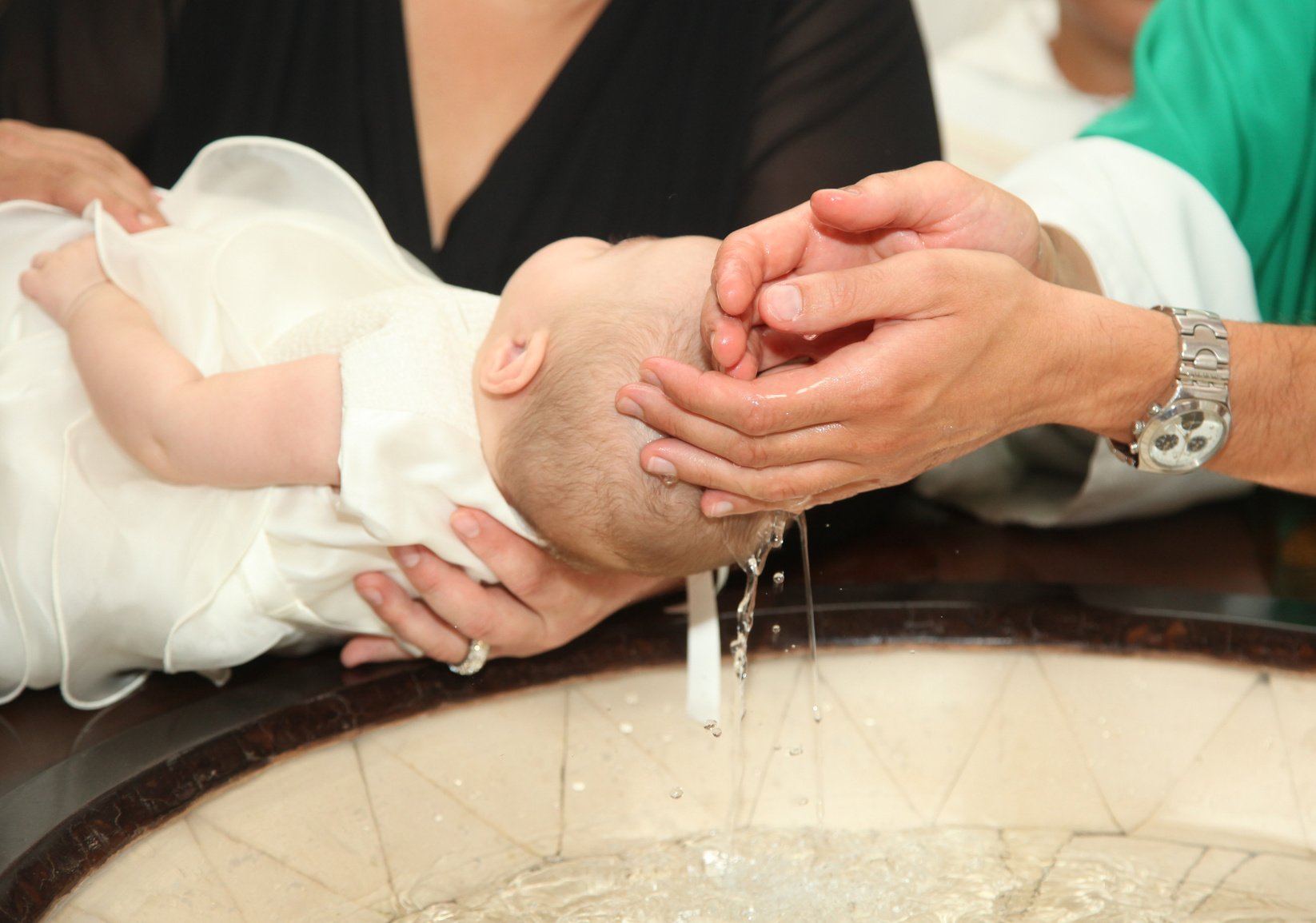
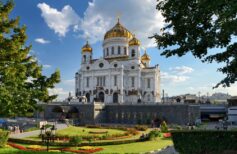
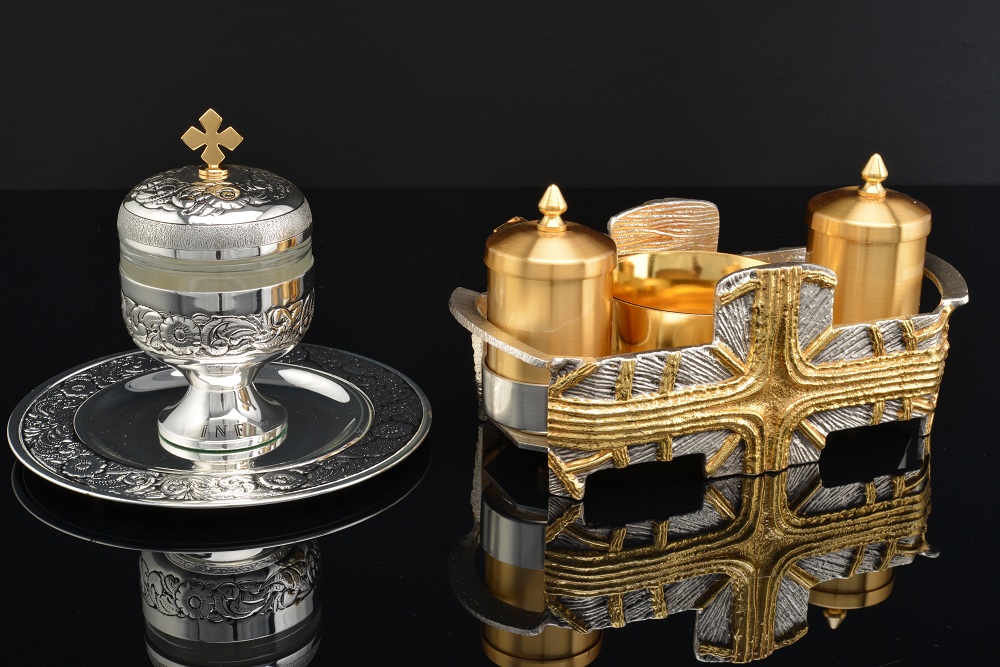
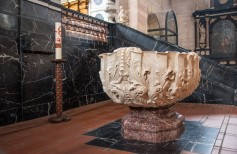
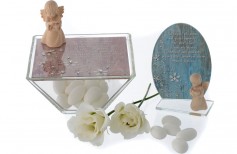
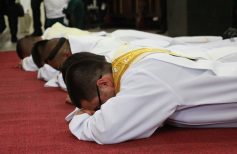
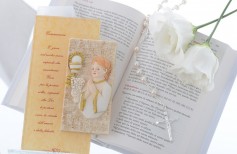

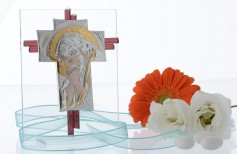
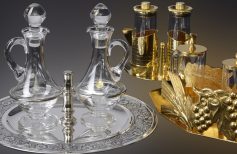








 19 March 2025
19 March 2025






